Fermented Napa Cabbage Pickles, Carefully Made by Roshuho
Mar 09,2023
Fermented Napa Cabbage Pickles, Carefully Made by Roshuho
Mar 09,2023
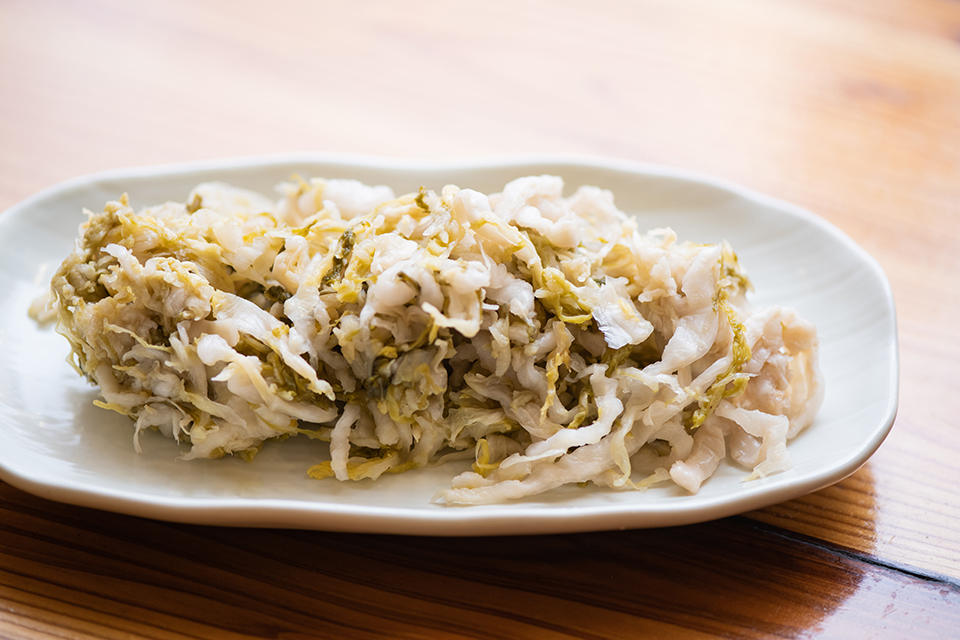

As people become more health-conscious, fermented foods are attracting increasing interest for their immunity-boosting benefits. One such food is a sour Chinese pickle called fermented napa cabbage. Cookbooks devoted to it have recently appeared, and more and more people are starting to enjoy making it at home. At the Chinese restaurant Roshuho in Tokyo’s Okachimachi neighborhood, dishes made with fermented napa cabbage are among the most popular offerings on the menu. We recently paid a visit to get the lowdown on fermented napa cabbage’s wonders from the man who runs the place, Liang Baozhang.
Fermented napa cabbage is a sour napa cabbage pickle traditionally eaten in northeast China. In Chinese it’s called suancai or “sour vegetable.” Northeast China comprises the three provinces of Liaoning, Jilin, and Heilongjiang. Owner Liang Baozhang is from Qiqihar in the northernmost of the three, Heilongjiang.
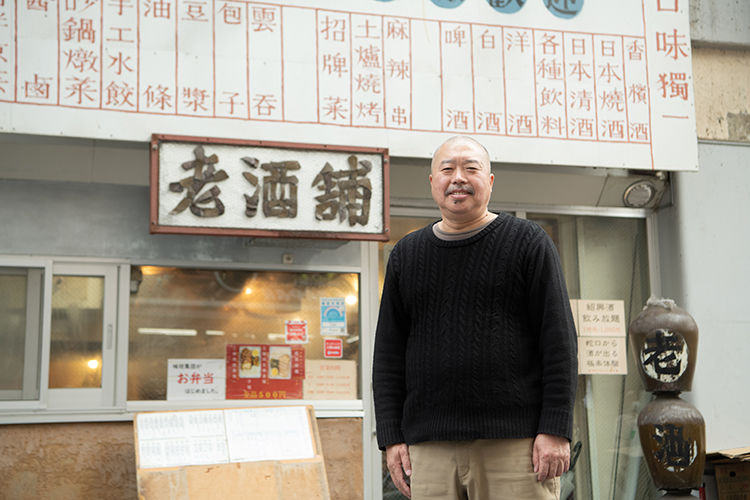
Liang Baozhang, president of Ajibo Group, which currently operates ten restaurants in Tokyo. Among them is Roshuho, modeled on a typical Beijing pub. Here you can enjoy a drink with various snacks.
“The winter in northeast China is long and bitterly cold. The mercury drops below minus thirty degrees Celsius in January and February. The ground is frozen, and no crops can grow. Once upon a time there were no trains or planes as there are today, and hothouse farming didn’t exist. But people can’t survive without eating vegetables. What people in the old days therefore did was make pickles by fermenting napa cabbage so it would keep. Daikon is fermented and eaten the same way.”
Northeast China is a major producer of napa cabbage. Traditionally, the pickles were made in each home using the large amounts of cabbage harvested in autumn. Today, however, that’s become less common.
“Everyone lived in single-story homes in the old days, but now housing conditions have changed. Many people live in condos. They’re bothered by the peculiar smell that fermented foods have, so they no longer make them at home. Almost everybody buys stuff mass-produced at the factory. Fermented cabbage was once typically eaten in winter, but now it’s made and eaten year-round.”
Fermented napa cabbage is dead simple to make. The only ingredients you need are some napa cabbages and salt.
“Let the cabbages sit for a day to drain them a little,” Baozhang explains. “Then put them in a big jar, cutting the large ones into two. Next, sprinkle the cabbage with salt. Alternate layers of cabbage and salt and place a large rock on top. Moisture will then be steadily released, pervading the entire batch. If it’s winter, store somewhere that’s about fifteen degrees, and your fermented napa cabbage will be ready in about a month and a half. How much simpler could it get? In the past, people would often make miso as well, and every family’s miso tasted different. But all you use to make fermented napa cabbage is salt, so the taste doesn’t vary that much.”
Lactic acid fermentation is driven by the action of the microbes naturally present on the cabbage, resulting in a flavor bursting with sourness and umami. These pickles are rich in lactic acid bacteria and packed with vitamins and other nutrients contained in napa cabbage.
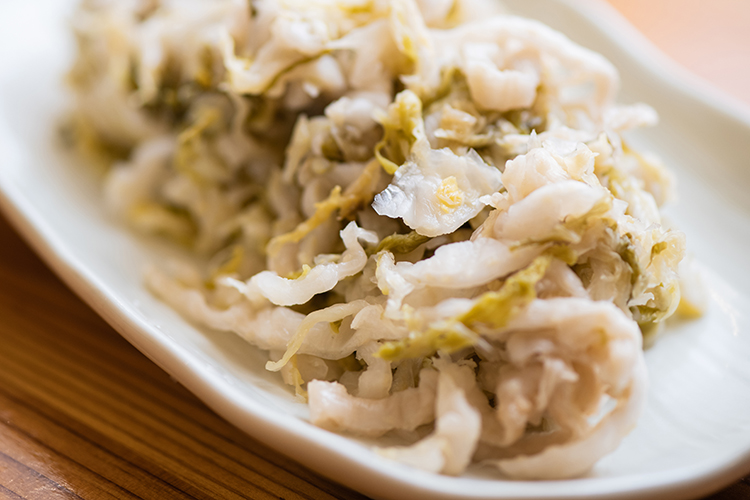
The fermented napa cabbage served at the restaurant is produced at the company’s own factory using Japanese-grown napa cabbage. Over 2,000 cases of napa cabbage are used a year.
For Baozhang, fermented napa cabbage brings back memories. He was brought up eating it every day.
“There was nothing else to eat, right [laughs]? In winter, we mainly ate fermented napa cabbage and potatoes, either stir-fried or stewed. Dishes made with wheat flour are central to northeast Chinese culture. People often eat steamed bread, noodles, and jiaozi (gyoza), usually accompanied stewed foods. That’s because in the old days, there would only be a single iron pan in the kitchen of each household. The starch dish and the food to accompany it would thus have to be prepared in the same pan. You would stew, say, fermented napa cabbage in it with a mesh on top and steam bread at the same time.”
Fermented napa cabbage is indispensable to northeast Chinese cuisine, but it’s seldom eaten as is. Generally, it’s cooked first. “The outside leaves of the cabbage are tough and chewy,” says Baozhang, “so you chop just the soft core into small pieces, then serve it with meat. It makes a delicious, refreshing meal.”
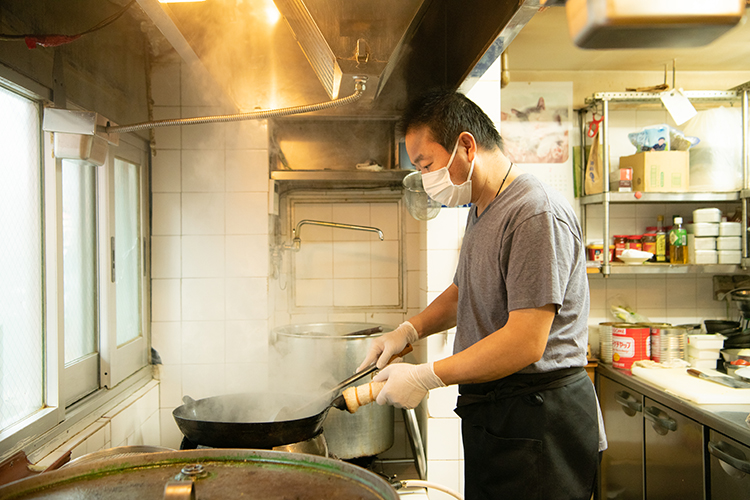
The restaurant’s chefs, all from China, are skilled at bringing you the authentic taste of northeast Chinese home cooking.
Currently, Roshuho features three dishes made with fermented napa cabbage: a stir-fry, hotpot served in an earthenware dish, and boiled jiaozi. In all three, the cabbage is combined with what it goes best with — pork.

Stir-fried fermented napa cabbage and pork. This dish delivers a nice kick.
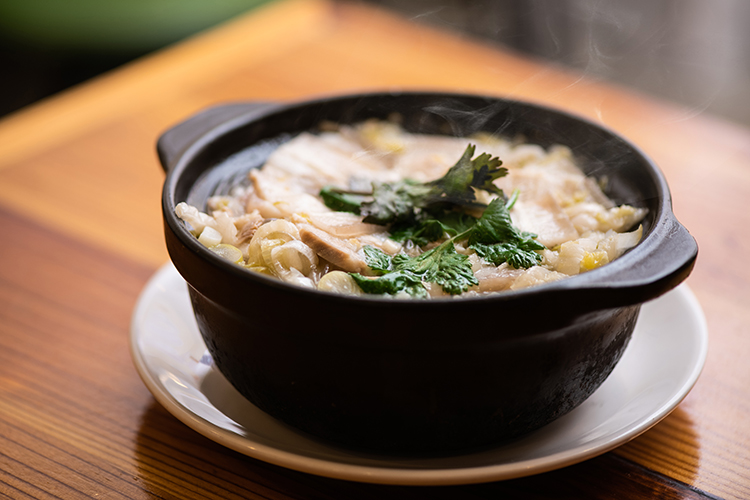
Fermented napa cabbage hotpot. The rich-tasting soup warms you to the core.
The stir-fried pork and fermented napa cabbage with glass noodles lets you enjoy the sour taste in all its glory. The tang and crisp texture of the cabbage make a great combination with the aroma of ginger and garlic. You won’t be able to put your chopsticks down once you take your first bite. In the hotpot, the sourness is toned down, and the soup suffused with umami warms you to the core. The stir-fry and hotpot, though made with virtually the same ingredients, are carefully concocted to deliver two different taste experiences.

Boiled jiaozi with fermented napa cabbage. Baozhang’s home province of Heilongjiang is famed for boiled jiaozi.
The boiled jiaozi fuse the rich taste of ground pork with the refreshing tanginess of fermented napa cabbage. They let you enjoy a different flavor profile from either the stir-fry or the hotpot. The wrappers containing the filling are wonderfully soft and springy, being handmade.
“Fermented napa cabbage is unique to northeast China, and dishes made with it are found nowhere else. Because fresh foodstuffs are now available throughout the year, fermented foods are eaten less often these days. They’re packed with the wisdom of past generations, though, and they’re good for you too. When you eat our cuisine, I hope you won’t just enjoy its great taste but get to know our regional culture as well.”
